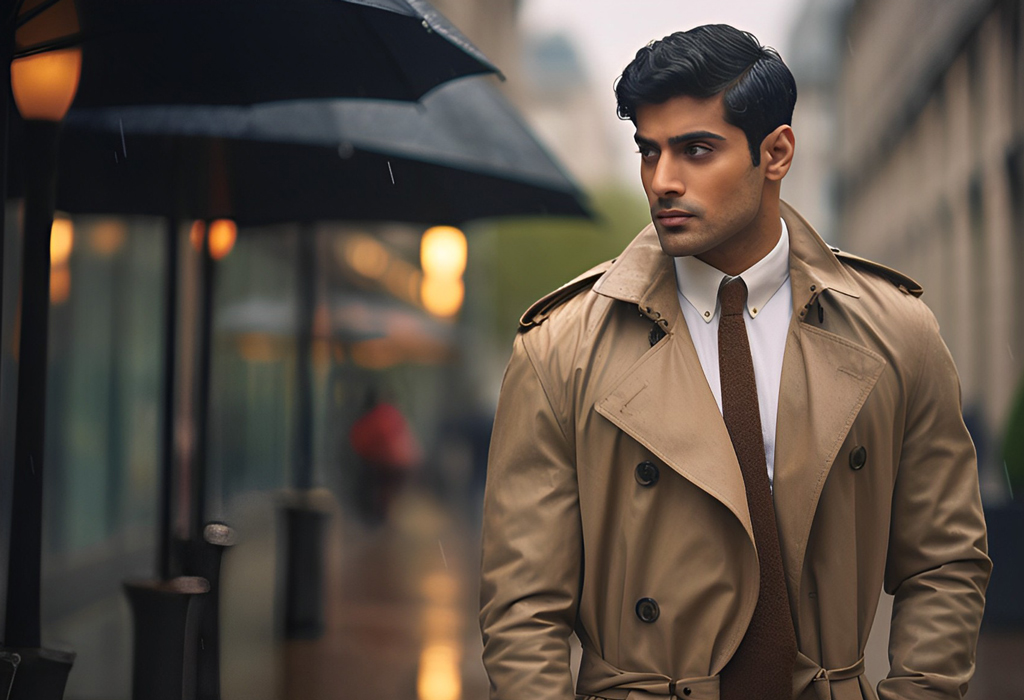
What do Rick Blaine, Dick Tracy and Inspector Clouseau have in common?
Well, apart from dark hair, they all made the trench coat famous and they looked sharp doing it.
The trench coat has been around for the better part of a century. This piece of classic men's fashion will not disappear anytime soon.
A trench coat is stylish and practical. There are many styles, materials and colors to choose from thus making the decision on what style fits you feel overwhelming.
This article has been written to help you understand the trench coat and ultimately make a good decision which style is best for you.
Trench Coats: Classic and Historic Menswear
British-based clothier Aquascutum developed a waterproof coat for officers of the Crimean War (1853-56) and Thomas Burberry, inventor of gabardine fabric, sent a waterproof coat design to the British army at the beginning of the 20th century.
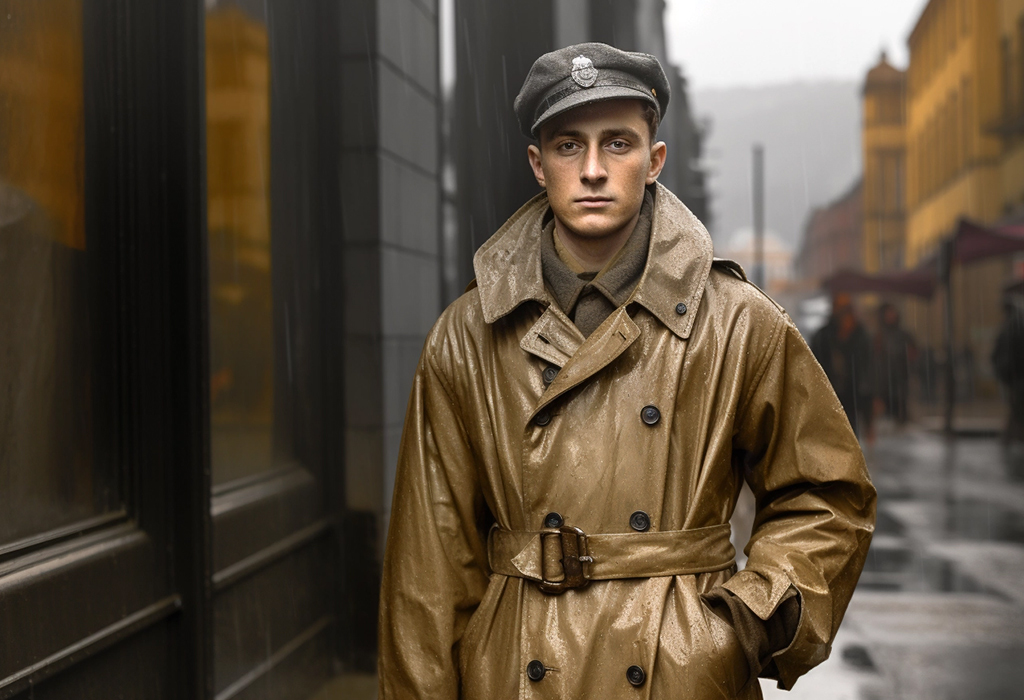
Both clothiers lay claim to the invention of the trench coat. Whoever was the first to invent the waterproof trench coat is always debated, but the point is that their inventions have been keeping soldiers dry in the wettest of conditions.
After the end of World War I soldiers returning to civilian life brought with them their trench coats and the fashion quickly caught on.
From the muddy trenches of France to the streets of the growing metropolis, the trench coat is a staple in weather protection. When a gentleman puts on a trench coat he can almost feel the history and the value the trench coat has.
Trench Coats Are Practical
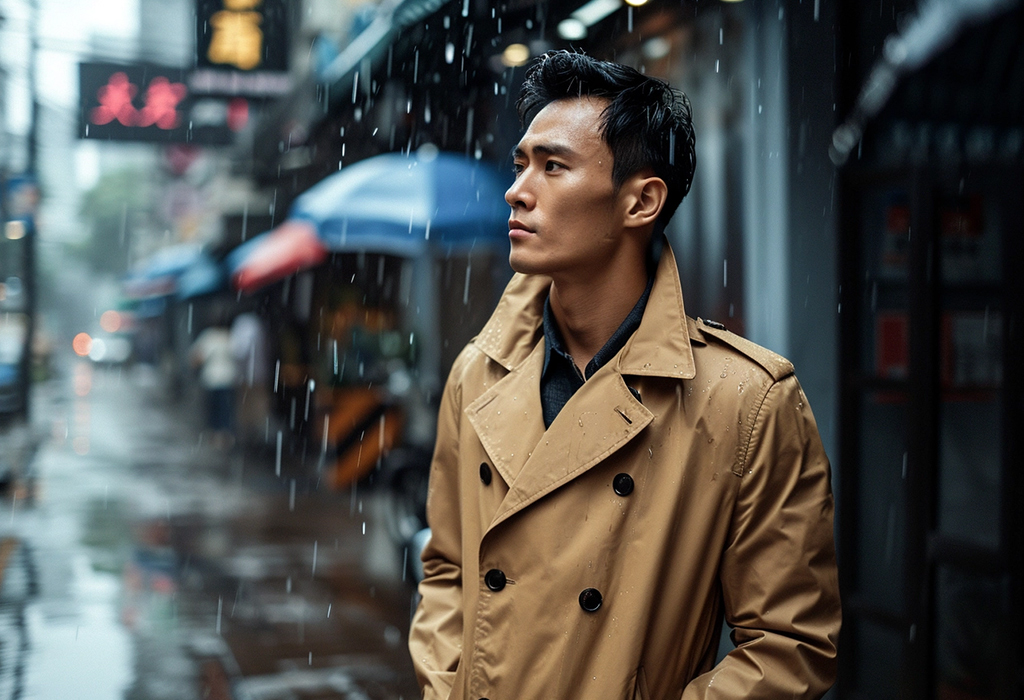
Being rained on is not fun. The feeling of wet clothes, wet hair and skin can make a dreary, rainy day seem even worse. If you live in an area with heavy annual precipitation (Seattle, for example), you will undoubtedly find yourself having to walk through the rain.
A man's umbrella is useful when the rain falls perpendicular to the ground and when there is no wind. Most storms, though, have substantial wind gusts and sometimes horizontal rain rendering umbrellas useless. A trench coat will keep a man and a man's clothing dry.
Trench Coat Fabrics Give a Man Many Options
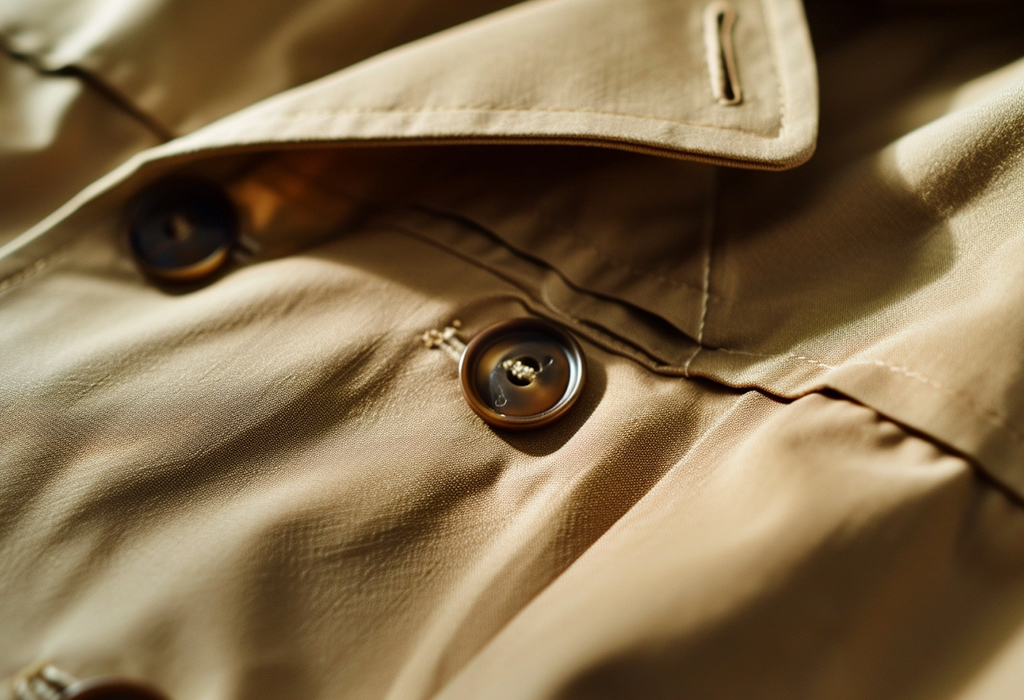
Here is a list with quick explanations of the various fabrics used to make trench coats:
1) Gabardine: Invented by Thomas Burberry, gabardine is a tightly-woven fabric that can be distinguished by its diagonal ribs on the face and a smooth backing. Traditionally made from worsted wool, gabardine can nowadays be found made from cotton, polyesters, or blends.
2) Leather: The hides of various animals (cattle being the most common) make for serious trench coats. Leather is known for its durability, softness and protective qualities. Any leathers, though, need consistent cleaning, conditioning and air circulation in order to have a long lifetime.
3) Cotton drill: Similar to gabardine, cotton drill is a tightly-woven fabric with a prominent twill weave. Cotton drill is strong, durable and breathable. The fabric has also been used to make work gloves, chef aprons, among others.
4) Serge: Military uniforms and greatcoats were made from serge fabric. Sometimes you will find a trench coat made from this twill fabric. Serge looks like gabardine, but can be distinguished from gabardine by its diagonal ribs on both sides of the fabric (whereas gabardine is smooth on the backside).
Trench Coat Colors for All Seasons

Trench coats for the traditionalist are khaki in color.
Rick Blaine and Inspector Clouseau wore khaki-colored trench coats and khaki is what most people envision when they think trench coat. However, there are many colors and shades that can compliment your wardrobe.
Understand what color fits best with your physical features and your clothing.
Black is a neutral color that compliments many other colors. Blue works well if you are of a thin build. Olives and greens are reminiscent of the trench coat's military history. Brown is a great option if you want a leather trench coat. And, of course, khaki is king.
Trench Coat Styles Allow Every Man to Wear Them
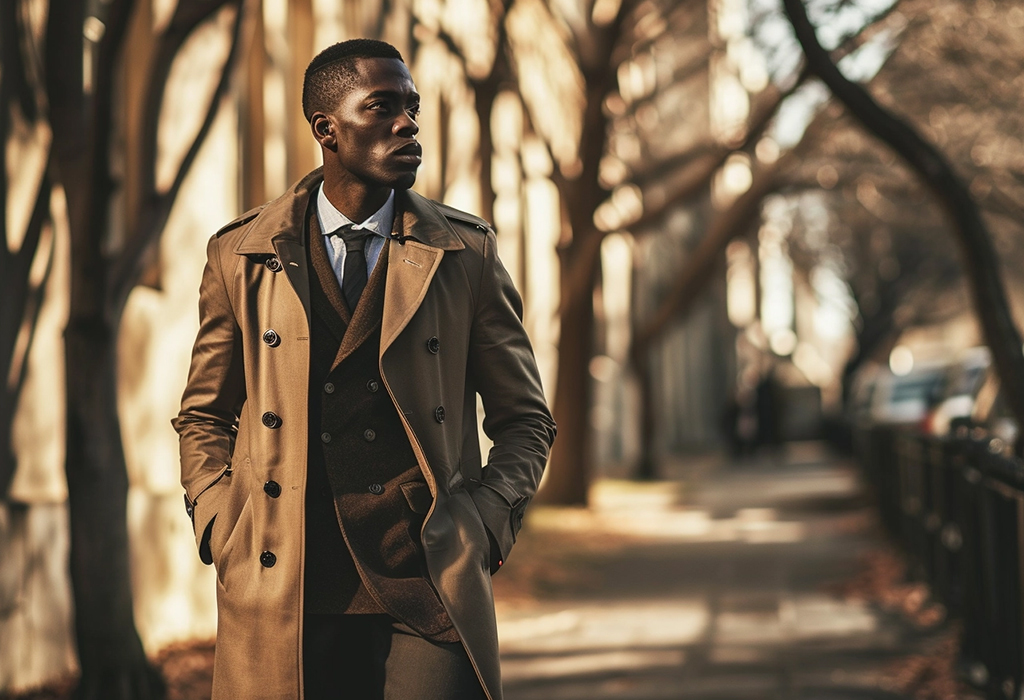
Trench coats are classic pieces of men's fashion. Little has changed and little will change in trench coat styles. What you buy today will look great tomorrow and twenty years from now.
However, there are trench coats specifically made by “avant garde” fashion designers. We suggest you stay away from these overpriced flashy coats.
The good thing is that these trendy trench coats only make up a very small percentage of what you find in the stores. Today you will generally see trench coats in the stores that would not look out of place fifty years ago.
Single Breasted or Double Breasted: If you are vertically challenged (5'7″ or less) and / or lightweight (150lbs or less), then we suggest a single breasted trench coat. A double breasted trench coat has more fabric that would envelop a small man and his features.
Belted: Trench coats should have a removable D-ring belt. Why? Trench coat belts were used so that a military officer could attach a sword or a pistol holster. But now a belt serves a purpose of accentuating a man's physical features.
A trench coat should be fitted (see below), but by using a belt a man can bring in those remaining fractions of an inch of fabric which would otherwise be loose.
Vented: A long coat with no vents will slow a soldier, making him an easy target for machine guns and snipers as he goes over the top of his trench into “No Man's Land”. Therefore, the single vent on the back of a trench coat allows for his legs to achieve his maximum gait. The single vent has been a standard since the coats invention. It won't make a departure anytime soon.
Storm flap: Sometimes erroneously called a “gun flap”, this extra piece of fabric covers the right side of a man's breast. It protects against water entering the jacket where the two folds meet.
Soldiers who shouldered their firearms sought to remain dry underneath; a trench coat without a storm flap would “open” at the fold and allow water to enter through the “holes” between the buttons. The storm flap keeps from any holes being created as a man raises his arms. It is a valuable asset to have during the heaviest of downpours.
Insulated Linings: Some trench coats do not come with insulated linings. These are reserved for tropical climates. Another version is a trench coat with a removable insulated lining; a gentleman who lives in an area with variable weather conditions will find a removable insulated lining a godsend.
The other variation is a sewn-in insulation. The trench coat will keep you dry and the insulation will keep you warm — best for cold, rainy spring and autumn weather.
Shoulder Tabs (Epaulets): Officer insignia were attached to the epaulets so that soldiers could distinguish rank among trench coat-clad personnel. The tabs protected the coat from damage caused by the insignia pins. Today they serve only an aesthetic purpose.

How Should A Trench Coat Fit
The length of a trench coat is traditionally to just below the knee. However, a gentleman can find trench coats in various lengths: full-length, knee-length, three-quarters and short are the most common.
Tall men can easily wear a knee-length trench coat, but should avoid wearing short trench coats.
Short men should avoid wearing long trench coats. Unfortunately for all of us, full-length trench coats have been associated with negativity, goth, and Morpheus from “The Matrix”. We suggest to accept the fact: a man should not wear a full-length trench coat.
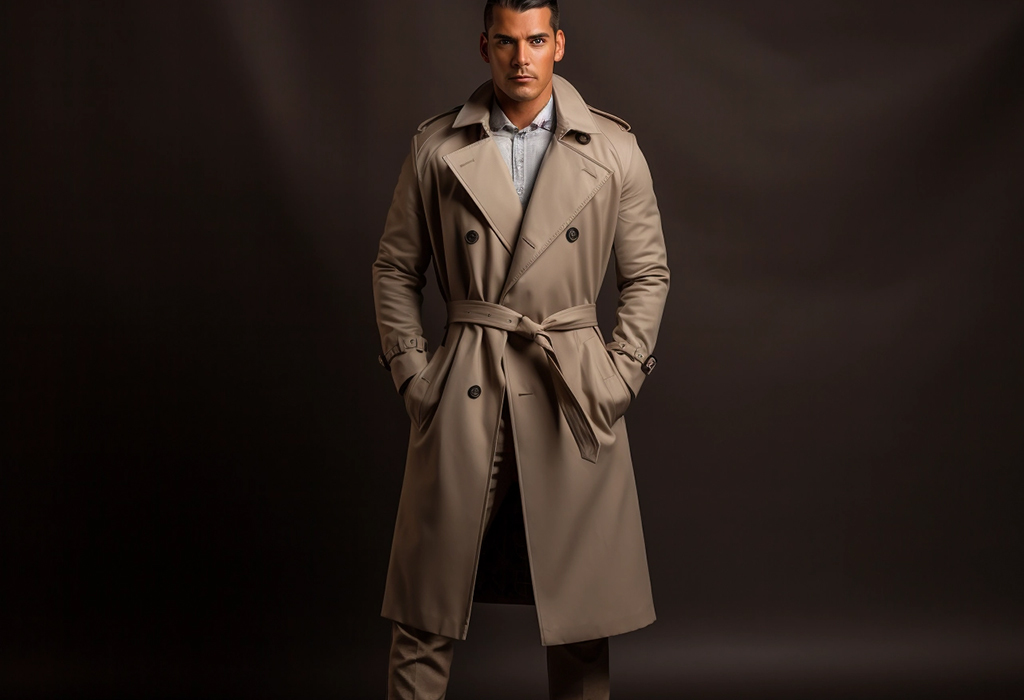
The shoulders of the trench coat should allow enough room for you to wear a man's suit jacket underneath. About .5″ to 1″ of the trench coat should extend past your natural shoulders. This space is sufficient for layers underneath.
The chest of the trench coat should be roomy enough for you to insert your fist between the jacket and your chest without being too tight.
The sleeves of the trench coat should extend 2″ to 3″ past your suit jacket cuff. The trench coat sleeves should fall into the bottom fold of your palm.
Where to Buy a Trench Coat
Now that you are convinced that trench coats are great pieces of menswear, you ask where you can find a trench coat? Below are possible places where you can strike trench coat gold:
1) Brick-and-mortar stores. You can see, feel and put on the coat. There is security in knowing that you are buying genuine and quality coats.
2) Internet stores. Faster and more options are at your fingertips. A simple internet search will give you thousands of hits, but the problem are finding a trusted seller (see below) and not being able to see, feel and try on the coat. Use your intuition.
3) Internet auctions. Here is a great way of getting a trench coat for cheap, especially vintage trench coats. However, there is more inherent risk of false advertising than internet stores. Do some research before you bid.
4) Thrift stores. Scoring a quality trench coat is more a hope and a prayer than for certain. Persistence and knowing where to thrift could land you a vintage, lightly-used trench coat for pennies on the dollar. Our suggestion is to locate any thrift stores in well-to-do neighborhoods.
5) Within the family. Perhaps your father or grandfather, uncles or other relatives has a trench coat that fits you. If you are on the good side, you could get it for free or at least a small favor in return. It never hurts to ask.
Carefully research any “too good to be true” offers of otherwise expensive trench coats (e.g. Burberry). While the counterfeit / knockoff market for trench coats is not as prolific as luxury watches, wherever there is a famous name there are sure to be fakes.
Parting thoughts on the men's trench coat
If you are naturally hesitant about purchasing quality clothing, we can reassure you that a classic trench coat will not lose its style. Your investment today will keep the rain off your back for decades to come.
The post Guide To Man’s Trench Coat | Stylish, Practical and Classic appeared first on Real Men Real Style.
0 Commentaires